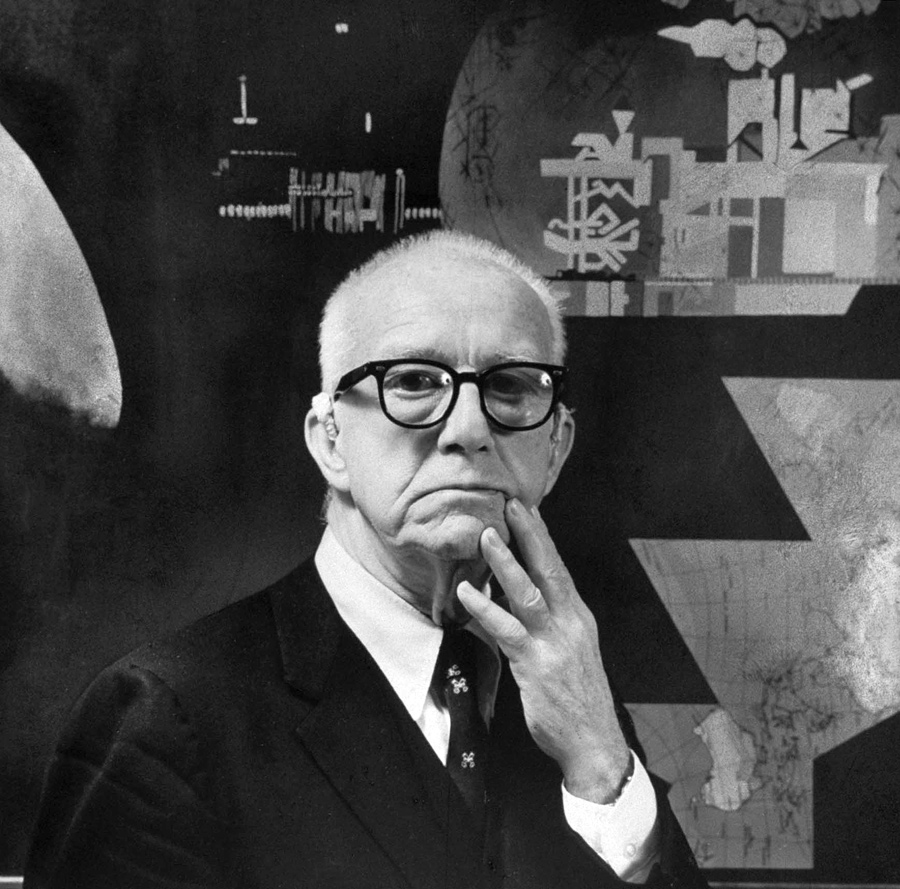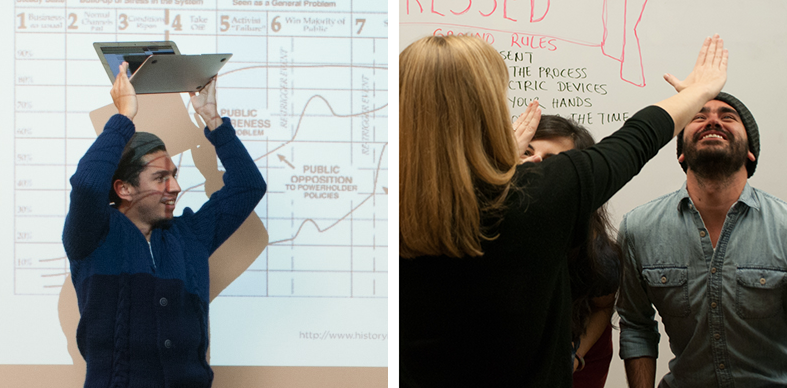
Architect Buckminster Fuller. (Photo by John Loengard//Time Life Pictures/Getty Images)
The article that follows is from a new journal called The Understatement: Thoughts on the State and Practice of Social Design, published by MFA Design for Social Innovation at SVA. The journal can be accessed here.
What we mean when we say “design for social innovation”
Social innovation design is the creation and propagation of healthy, mutually beneficial relationships between humans, technology and the earth. It has the potential to impact every business, government, city, neighborhood and individual. This is what our program is about, what we teach and what our graduates are out in the world doing. To put it more succinctly, it’s the design of the relationships between people and things instead of only the things themselves.
It wasn’t always so. In the book he was writing when he died in 1983, Buckminster Fuller defined the purpose of design as:
“solving problems by introducing into the environment new artifacts, the availability of which will induce their spontaneous employment by humans and thus, coincidentally, cause humans to abandon their previous problem-producing behaviors and devices. For example, when humans have a vital need to cross the roaring rapids of a river, as a design scientist I would design them a bridge, causing them, I am sure, to abandon spontaneously and forever the risking of their lives by trying to swim to the other shore.”Fuller is considered one of the great design minds of all time, but thirty-three years later, we’ve come to a less romantic view of artifacts and their power to change problem-producing human behavior.
Artifacts, we now know, produce a desire for more artifacts: bridges, houses, rockets, cars and airplanes, computers, phones, assault rifles and electric mixers. We want them fancier, faster, more convenient, more powerful.
A tiny portion of these artifacts produce miracles –– opening new nano worlds, curing disease, creating new forms of non-polluting energy, bringing light to the 1.2 billion people without electricity.
But the vast majority do nothing more than create an excess of things: Islands of plastic in our oceans, mountains of discarded cell phones that poison the women and children who disassemble them, bridges to handle more traffic to places that were better left undeveloped, vast landfills packed with the detritus of our days.
Today, design has a direct and urgent role in inspiring healthier human behavior. Rather than making more things in the hope that they will save us, we can actually design new ways of being and interacting, inspiring us to become more empathetic, more aware of the ecosystems around us, more creative, more resourceful and, coincidentally, less reliant on artifacts for meaning in our lives.
The point of social innovation design, in short, is to help us form relationships that increase our creative potential and make us more human, in the most humane, connected sense of that word.

Photos: Maia Kaufman
The entire journal from which this article is extracted can be accessed here.

